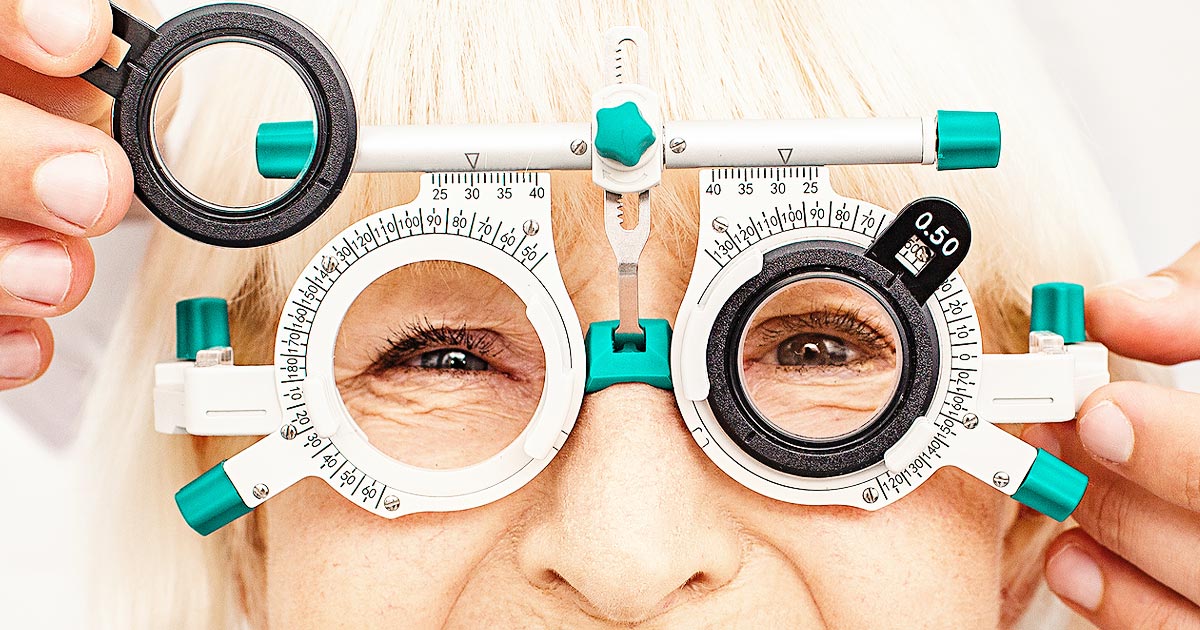Contains Affiliate Links
(NAPSI) If you are like the majority of Americans, heart disease and eye disease run in your family. So you should know that a growing body of research suggests that eye and heart health are related. The latest study suggests that people with a specific form of age-related macular degeneration (AMD) are at significant risk for cardiovascular disease and stroke.
About AMD
AMD is the leading cause of visual impairment and blindness in people over 65 years old. There are two types of AMD. The type called dry AMD happens when the central area of the retina called the macula becomes damaged from the formation of small yellow cholesterol deposits under the retina. These deposits deprive the retina of blood and oxygen, leading to vision loss. The type of deposits the researchers believe are linked to heart disease are called subretinal drusenoid deposits.
The new study adds to the list of several health conditions an eye exam may help detect.
The Eye as a Window into Heart Health
Blood vessels and nerves in the eyes are reflective of the rest of the body. That’s why medical conditions such as stroke, heart disease, some cancers, and diabetes are sometimes first diagnosed by an ophthalmologist during a routine eye exam.
Here’s what ophthalmologists want you to know about protecting both your eye and heart health:
1. Eat well. A heart-healthy diet full of leafy greens and colorful fruits is also good for the eyes. Studies show foods rich in vitamins C and E, zinc, lutein, zeaxanthin, and omega-3 fatty acids can lower risk of certain eye diseases, including macular degeneration, cataracts, and dry eye.
2. Exercise. The American Heart Association recommends 30 minutes of exercise a day. For eye health, the science shows regular exercise can protect your vision and, if you already have an eye disease, it can help you manage it better.
3. Know your family history. Early detection is key. Many leading causes of blindness run in the family, such as macular degeneration and glaucoma. Know your family history and share it with your ophthalmologist at your next eye exam.
4. Get routine eye exams. Seeing an ophthalmologist could do more than save your eyesight, it can also save your life. When David Hibler, Sr. went to get his eyes checked, his ophthalmologist detected signs of a blood clot. Thanks to a thorough eye exam, Hibler got treated and avoided a potential stroke. The American Academy of Ophthalmology recommends all adults receive a comprehensive eye exam by age 40, and every year or two after age 65.
Eye Exams Can Save Lives. EyeCare America Can Help
There could be good news for individuals age 65 or older who are concerned about their risk of eye disease and/or the cost of an eye exam: You may be eligible for a medical eye exam, often at no out-of-pocket cost, through the American Academy of Ophthalmology’s EyeCare America® program. This public service program matches volunteer ophthalmologists with eligible patients in need of eye care across the United States. To see if you or a loved one qualifies, visit EyeCare America. EyeCare America is co-sponsored by the Knights Templar Eye Foundation Inc., with additional support provided by Alcon and Regeneron. ISI
For more information, visit www.aao.org/eyecare-america.









